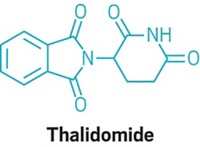Advertisement
Grab your lab coat. Let's get started
Welcome!
Welcome!
Create an account below to get 6 C&EN articles per month, receive newsletters and more - all free.
It seems this is your first time logging in online. Please enter the following information to continue.
As an ACS member you automatically get access to this site. All we need is few more details to create your reading experience.
Not you? Sign in with a different account.
Not you? Sign in with a different account.
ERROR 1
ERROR 1
ERROR 2
ERROR 2
ERROR 2
ERROR 2
ERROR 2
Password and Confirm password must match.
If you have an ACS member number, please enter it here so we can link this account to your membership. (optional)
ERROR 2
ACS values your privacy. By submitting your information, you are gaining access to C&EN and subscribing to our weekly newsletter. We use the information you provide to make your reading experience better, and we will never sell your data to third party members.
Biological Chemistry
Small Molecule Inhibits Specialized Form Of Cell Death
Chemical genetics screening study identifies a small-molecule inhibitor for programmed cell death
by Stu Borman
January 30, 2012
| A version of this story appeared in
Volume 90, Issue 5
A chemical genetics study has identified a small-molecule inhibitor for a specialized programmed cell death process and revealed a previously unknown molecular component in the pathway that controls the process. Necroptosis—a form of necrosis, or cell death from extracellular causes such as infection and tissue damage—is controlled by a cellular signaling pathway. The pathway plays important roles in a variety of life processes, including development, response to tissue damage, and immune reactions to viruses. Xiaoguang Lei and Xiaodong Wang of China’s National Institute of Biological Sciences and coworkers used high-throughput chemical screening to identify necrosulfonamide as a compound that blocks necroptosis (Cell, DOI: 10.1016/j.cell.2011.11.031). Signaling molecules in the necroptosis pathway were previously known to include receptor-interacting serine-threonine kinases 1 and 3 (RIP1 and RIP3), but the target of necrosulfonamide turns out to be mixed-lineage kinase domainlike protein (MLKL). The study thus reveals MLKL to be a critical component of the necroptosis pathway, which was not known before. Necrosulfonamide “will be a very useful chemical probe for further biological studies,” Lei says.




Join the conversation
Contact the reporter
Submit a Letter to the Editor for publication
Engage with us on Twitter